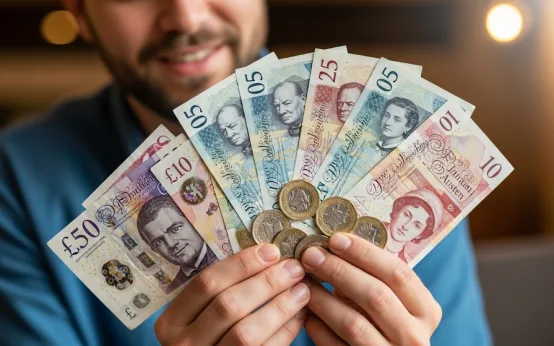
Nobody wants to hand over more tax money than necessary — especially after making smart investment choices. The good news? There are completely legal, smart ways to reduce how much tax you pay on your investment gains. And no, they don’t involve loopholes or dodgy grey areas — just informed, strategic decisions.
Here’s how you can keep more of your returns while staying fully on the right side of the law.
Know which taxes affect your investments
In the UK, two main taxes hit investors: Capital Gains Tax (CGT) and Dividend Tax. If you sell an asset like shares or crypto and make a profit above your annual allowance, you might owe CGT. Same goes for dividends — if they exceed the annual threshold, you’ll face a tax bill.
Right now (2025), the annual CGT allowance is £3,000, and dividend allowance is £500 — much lower than in previous years. That means even casual investors can end up paying more than they realise if they don’t plan ahead.
Use a Stocks and Shares ISA to shelter your gains
This is your number one weapon. The Stocks and Shares ISA allows you to invest up to £20,000 per tax year, and everything inside it — capital gains, dividends, interest — is completely tax-free.
You could invest in ETFs, individual stocks, bonds, or even REITs through your ISA and never worry about tax on those returns. It’s a must-use if you’re serious about long-term investing.
Open one early in the tax year, fund it monthly if you can, and treat it like your personal tax shelter for growing wealth.
Maximise your pension contributions
Investing through your pension — like a Self-Invested Personal Pension (SIPP) — offers big tax benefits. For every contribution you make, the government adds 20% in tax relief (more if you’re a higher-rate taxpayer). So a £1,000 investment only costs you £800 out of pocket — instantly boosting returns.
Plus, anything you earn inside your pension grows tax-free. You won’t pay tax until you withdraw later in life — and even then, 25% of your pension pot can be taken tax-free.
If you’ve already maxed out your ISA, boosting your pension is the next smartest move.
Spread investments across partners or family members
If you’re investing as a couple, use both ISA allowances and capital gains allowances. That way, you double the tax-free potential — up to £40,000 in ISA contributions per year (as of 2025) and two CGT exemptions.
Some families even set up Junior ISAs to start investing for their children — tax-free and with long-term growth potential. It’s a great way to build generational wealth while staying tax-efficient.
Time your sales to reduce capital gains tax
If you’re sitting on big gains, consider selling assets in chunks across tax years. By doing so, you can stay within your annual CGT allowance multiple times and reduce your overall tax bill.
For example:
- Sell £3,000 in March
- Sell another £3,000 in April (new tax year)
Same asset, different year — smarter result.
Also, avoid selling everything during high-income years, where your gains might be taxed at higher rates.
Offset gains with losses
This is a tactic many overlook. If you’ve had a losing investment, you can sell it to realise the loss, then use it to offset your capital gains, reducing your taxable profit.
Let’s say you made £5,000 on one stock but lost £2,000 on another. You sell both, and now you only pay tax on the £3,000 net gain.
It’s not fun to sell a loser — but doing so strategically can make a big difference to your end-of-year tax situation.
Don’t ignore dividend taxes
Dividends used to be more tax-friendly, but with the allowance now just £500 per year, high-yield stocks outside an ISA or pension can quickly become a liability.
If you’re earning significant dividends:
- Prioritise holding those stocks inside your ISA or pension
- Use accumulation ETFs that reinvest profits instead of paying them out
- Spread income-generating assets across both partners to stay below the threshold
It’s not about avoiding dividends — it’s about placing them where they do the least tax damage.
Keep records and stay organised
This might sound basic, but it’s crucial. Without clean records, it’s hard to prove when you bought assets, how much you paid, or what losses you can claim.
Use a spreadsheet, app, or even HMRC’s Capital Gains Tax tool to track:
- Purchase dates and amounts
- Sale proceeds
- Dividend receipts
- Annual ISA contributions
Come tax season, you’ll thank yourself.
Think long-term, not just tax-term
It’s tempting to make decisions based purely on tax — but don’t forget the bigger picture. A good investment that’s slightly less tax-efficient can still beat a poor investment that’s 100% tax-free.
In other words: don’t let the tax tail wag the investing dog. Start with solid strategy, and then optimise for taxes — not the other way around.
Legal doesn’t mean limited — use the system a seu favor
Minimising investment tax isn’t about being sneaky. It’s about being strategic. From ISAs and pensions to timing your trades and using allowances wisely, there are plenty of legal ways to grow your money without giving more than necessary to HMRC.
Start simple, stay consistent, and let tax efficiency quietly boost your long-term returns.

 How to Make $1,000 a Month: Achieve Passive Income Now
How to Make $1,000 a Month: Achieve Passive Income Now  The Psychology Behind Stock Market Trends: Unveiling Insights
The Psychology Behind Stock Market Trends: Unveiling Insights  How to Build an Investment Portfolio with $10,000: Start Now!
How to Build an Investment Portfolio with $10,000: Start Now!